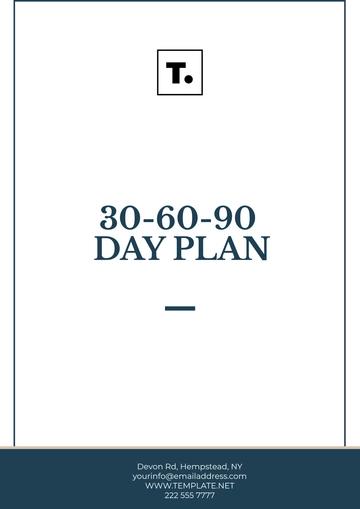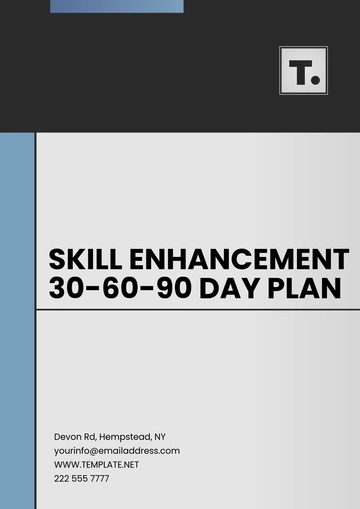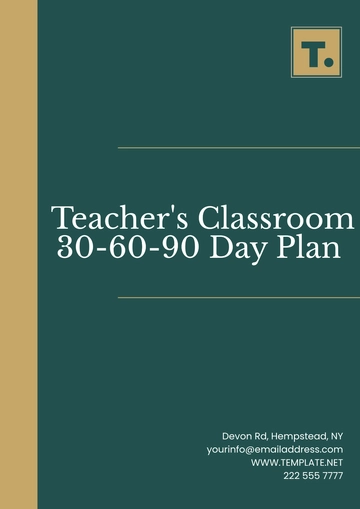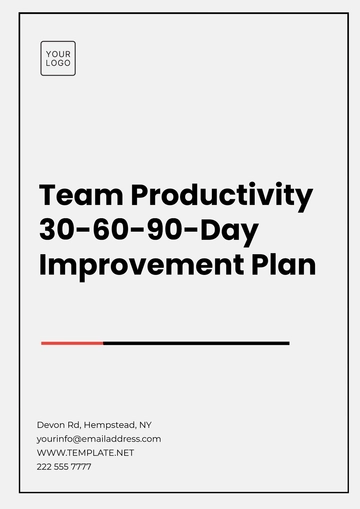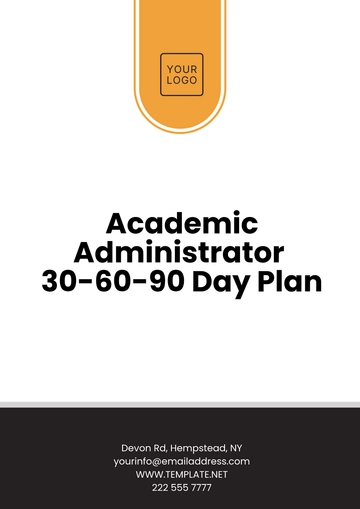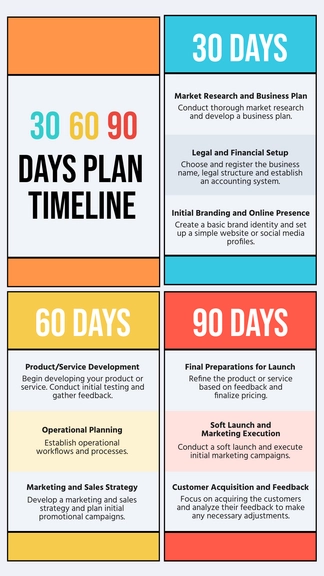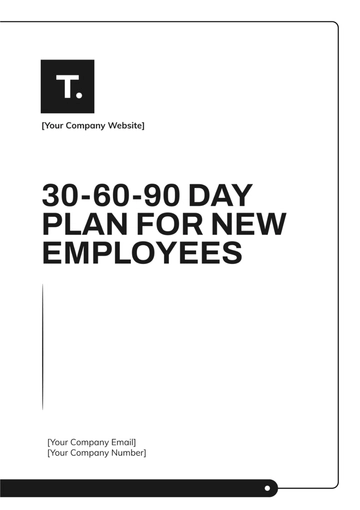Free 30-60-90 Day Plan For New Principals
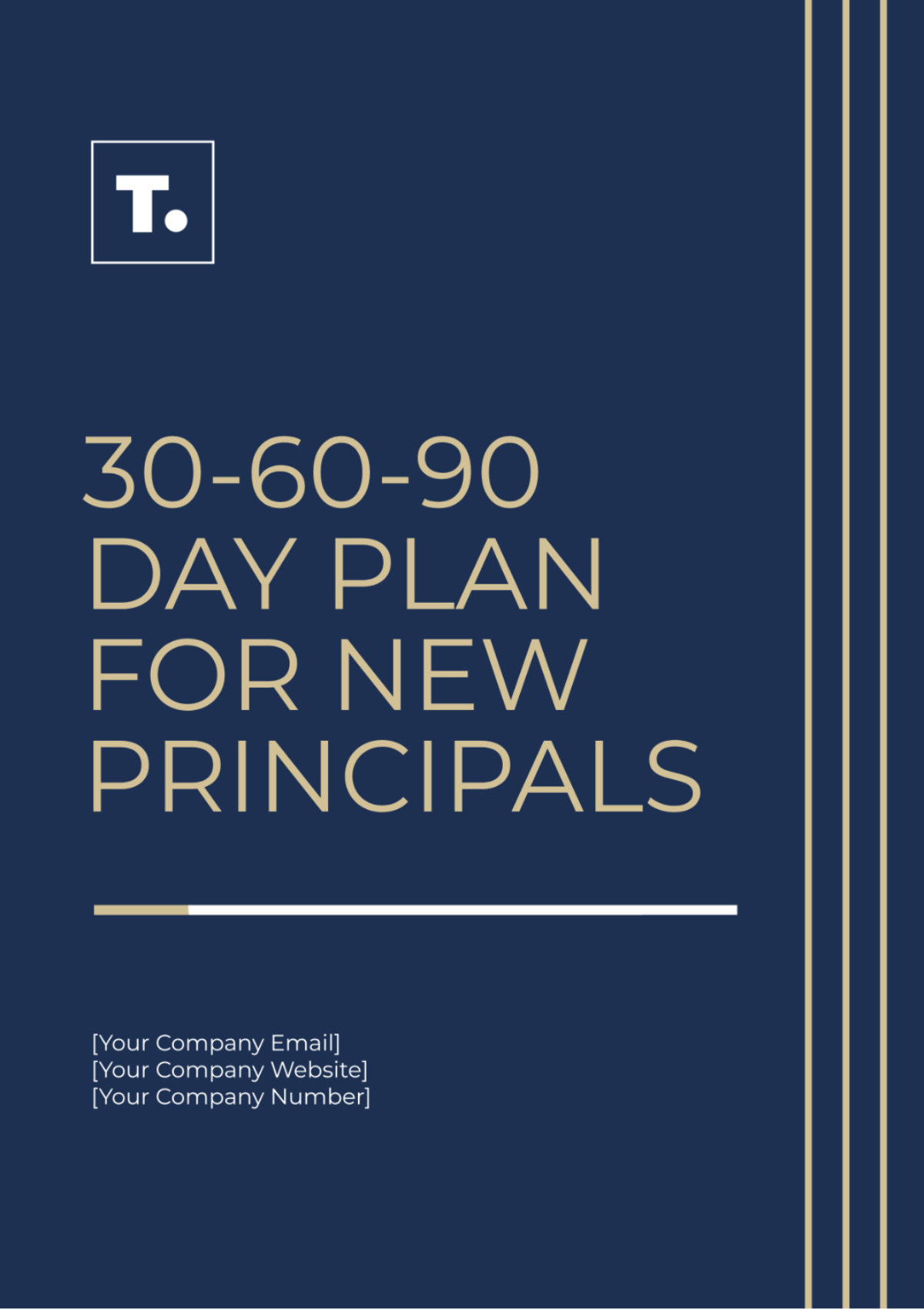
Written by: [Your Name]
I. Introduction
Welcome to your new role as Principal at [Your Company Name]. This 30-60 90-Day Plan is designed to guide you through the initial phase of your leadership, ensuring that you lay a strong foundation for your tenure. Following this plan will help you acclimatize to your new environment, understand your responsibilities, establish crucial relationships, and begin implementing strategies that will contribute to the success of the school.
II. 30-Day Plan: Orientation and Assessment
In the first 30 days, your focus should be on understanding the current situation of the school and building relationships with the staff, students, and the broader community.
A. Introduction Meetings
Meet with the previous principal for insights and handover notes: Schedule a meeting with the outgoing principal to gain insights into the school's culture, ongoing initiatives, and any pending challenges. Obtain handover notes detailing ongoing projects, key contacts, and any pressing issues requiring immediate attention.
Set up one-on-one meetings with all department heads: Initiate individual meetings with department heads to understand their roles, responsibilities, and departmental goals. Gather insights on current challenges, successes, and areas for improvement within each academic area.
Schedule a meeting with the Parent-Teacher Association: Arrange a meeting with the PTA to introduce yourself, share your vision for the school, and solicit their input on areas they believe need improvement. Establishing a positive relationship with the PTA fosters collaboration and support for school initiatives.
B. Review Existing Systems and Processes
Analyze current curriculum and student performance data: Review curriculum documents, standardized test scores, and other student performance metrics to identify trends and areas for academic improvement. Assess alignment between curriculum objectives and student outcomes.
Assess administrative and operational procedures: Evaluate existing administrative processes such as enrollment, attendance tracking, and staff communication systems. Identify inefficiencies or bottlenecks that may hinder the smooth operation of the school.
Review the current budget and financial allocations: Scrutinize the school's budget to understand revenue sources, expenditure patterns, and allocations across various departments and programs. Identify areas where financial resources may be reallocated to better support educational priorities.
C. School Walking Tour
Arrange a tour around the school to understand the physical layout and facilities: Conduct a comprehensive tour of the school grounds, including classrooms, labs, recreational areas, and administrative offices. Take note of any maintenance issues or facility upgrades that may be required.
Conduct informal conversations with staff and students during the tour: Use the opportunity to engage in casual conversations with teachers, support staff, and students to gain insights into their experiences and perspectives. Listen attentively to their feedback and concerns regarding the school environment.
III. 60-Day Plan: Strategic Planning and Initial Implementation
Next, build on your initial assessments to develop and start implementing a more strategic approach based on the needs you have identified.
A. Develop Strategic Goals
Identify key opportunities for improvement in student learning outcomes: Utilize data from student performance assessments and curriculum reviews to pinpoint areas where academic achievement can be enhanced. This may involve focusing on specific subjects, grade levels, or student demographic groups.
Set clear, measurable goals for the academic year: Establish SMART (Specific, Measurable, Achievable, Relevant, Time-bound) goals that align with the identified areas for improvement. Ensure that goals are realistic and attainable within the given timeframe, with measurable indicators of progress.
B. Staff Engagement and Professional Development
Initiate training sessions based on the gaps identified in the first month: Develop professional development workshops or seminars tailored to address the specific needs and challenges identified during the initial assessment period. Offer opportunities for staff to enhance their teaching strategies, classroom management skills, or subject knowledge.
Implement regular staff meetings to engage with faculty and address any issues: Schedule recurring staff meetings to foster open communication, collaboration, and feedback exchange among faculty members. Use these meetings to discuss progress towards strategic goals, address concerns, and celebrate achievements.
C. Community Outreach
Organize events that invite parents, residents, and community stakeholders to participate in discussions about the school's direction and priorities. Encourage community members to provide input on ways to strengthen the school-community relationship.
D. Begin Policy and Procedure Reforms
Start revisions of policies that need updates: Review existing school policies and procedures to identify areas where revisions or updates are necessary to improve effectiveness, compliance, or relevance. Collaborate with relevant stakeholders, such as faculty, staff, parents, and school board members, to propose and implement policy changes.
Implement new systems for more efficient administration and learning: Introduce innovative administrative systems or educational technologies that streamline processes, reduce paperwork, and enhance communication among stakeholders. Ensure adequate training and support are provided to facilitate a smooth transition to new systems.
IV. 90-Day Plan: Evaluation and Expansion
In this final phase, evaluate the effectiveness of implemented changes and begin planning for long-term initiatives.
A. Evaluate Initial Changes
Conduct a review of the new policies and strategies introduced: Assess the impact of the implemented policy reforms and strategic initiatives on student learning outcomes, staff productivity, and overall school culture. Gather feedback from stakeholders to identify areas of success and areas needing improvement.
Gather feedback from teachers, students, and parents: Administer surveys, conduct focus groups, or hold feedback sessions to solicit input from teachers, students, and parents regarding their experiences with the implemented changes. Analyze feedback to inform future decision-making and adjustments.
B. Enhance School Programs
Identify opportunities to expand the range of extracurricular and co-curricular activities available to students, such as sports teams, clubs, arts programs, or community service initiatives. Collaborate with staff, students, and community partners to design enriching experiences that cater to diverse interests and talents.
C. Long-term Strategic Planning
Begin drafting a 3-5-year strategic plan based on the successes and learnings of the first 90 days: Synthesize insights gained from the initial assessment period and evaluation of implemented changes to inform the development of a comprehensive long-term strategic plan. Define overarching goals, priorities, and action steps that align with the school's mission and vision for future growth and improvement.
Identify potential partnerships with local organizations and businesses: Explore opportunities for collaboration with local businesses, nonprofits, educational institutions, and government agencies to support school initiatives, enhance resources, and provide enriching experiences for students. Foster mutually beneficial partnerships that contribute to the school's objectives and benefit the broader community.
D. Communication and Reporting
Prepare a comprehensive report on the achievements and challenges of the first 90 days: Compile data, feedback, and insights gathered throughout the evaluation period into a detailed report documenting the school's progress, accomplishments, and areas for refinement. Include recommendations for future actions and initiatives based on the evaluation findings.
Present this report to the School Board and make it available to the school community: Schedule a presentation to the School Board to share the findings and recommendations outlined in the report. Additionally, disseminate the report to the school community through newsletters, website updates, or community meetings to foster transparency, accountability, and engagement.
V. Conclusion
This 30 60 90 Day Plan serves as a structured roadmap to help you transition smoothly into your role as a Principal at [Your Company Name]. Your proactive involvement and strategic oversight are crucial in steering the school toward its objectives of delivering quality education and fostering a nurturing environment for both students and staff.
- 100% Customizable, free editor
- Access 1 Million+ Templates, photo’s & graphics
- Download or share as a template
- Click and replace photos, graphics, text, backgrounds
- Resize, crop, AI write & more
- Access advanced editor
Enhance and Discover Template.net's 30-60-90 Day Plan For New Principals Template, your comprehensive roadmap to success in educational leadership. Crafted with precision and expertise, this editable and customizable tool empowers principals to effectively strategize their first crucial months—Editable in our Ai Editor Tool for seamless customization. Lead with confidence from day one.
You may also like
- Finance Plan
- Construction Plan
- Sales Plan
- Development Plan
- Career Plan
- Budget Plan
- HR Plan
- Education Plan
- Transition Plan
- Work Plan
- Training Plan
- Communication Plan
- Operation Plan
- Health And Safety Plan
- Strategy Plan
- Professional Development Plan
- Advertising Plan
- Risk Management Plan
- Restaurant Plan
- School Plan
- Nursing Home Patient Care Plan
- Nursing Care Plan
- Plan Event
- Startup Plan
- Social Media Plan
- Staffing Plan
- Annual Plan
- Content Plan
- Payment Plan
- Implementation Plan
- Hotel Plan
- Workout Plan
- Accounting Plan
- Campaign Plan
- Essay Plan
- 30 60 90 Day Plan
- Research Plan
- Recruitment Plan
- 90 Day Plan
- Quarterly Plan
- Emergency Plan
- 5 Year Plan
- Gym Plan
- Personal Plan
- IT and Software Plan
- Treatment Plan
- Real Estate Plan
- Law Firm Plan
- Healthcare Plan
- Improvement Plan
- Media Plan
- 5 Year Business Plan
- Learning Plan
- Marketing Campaign Plan
- Travel Agency Plan
- Cleaning Services Plan
- Interior Design Plan
- Performance Plan
- PR Plan
- Birth Plan
- Life Plan
- SEO Plan
- Disaster Recovery Plan
- Continuity Plan
- Launch Plan
- Legal Plan
- Behavior Plan
- Performance Improvement Plan
- Salon Plan
- Security Plan
- Security Management Plan
- Employee Development Plan
- Quality Plan
- Service Improvement Plan
- Growth Plan
- Incident Response Plan
- Basketball Plan
- Emergency Action Plan
- Product Launch Plan
- Spa Plan
- Employee Training Plan
- Data Analysis Plan
- Employee Action Plan
- Territory Plan
- Audit Plan
- Classroom Plan
- Activity Plan
- Parenting Plan
- Care Plan
- Project Execution Plan
- Exercise Plan
- Internship Plan
- Software Development Plan
- Continuous Improvement Plan
- Leave Plan
- 90 Day Sales Plan
- Advertising Agency Plan
- Employee Transition Plan
- Smart Action Plan
- Workplace Safety Plan
- Behavior Change Plan
- Contingency Plan
- Continuity of Operations Plan
- Health Plan
- Quality Control Plan
- Self Plan
- Sports Development Plan
- Change Management Plan
- Ecommerce Plan
- Personal Financial Plan
- Process Improvement Plan
- 30-60-90 Day Sales Plan
- Crisis Management Plan
- Engagement Plan
- Execution Plan
- Pandemic Plan
- Quality Assurance Plan
- Service Continuity Plan
- Agile Project Plan
- Fundraising Plan
- Job Transition Plan
- Asset Maintenance Plan
- Maintenance Plan
- Software Test Plan
- Staff Training and Development Plan
- 3 Year Plan
- Brand Activation Plan
- Release Plan
- Resource Plan
- Risk Mitigation Plan
- Teacher Plan
- 30 60 90 Day Plan for New Manager
- Food Safety Plan
- Food Truck Plan
- Hiring Plan
- Quality Management Plan
- Wellness Plan
- Behavior Intervention Plan
- Bonus Plan
- Investment Plan
- Maternity Leave Plan
- Pandemic Response Plan
- Succession Planning
- Coaching Plan
- Configuration Management Plan
- Remote Work Plan
- Self Care Plan
- Teaching Plan
- 100-Day Plan
- HACCP Plan
- Student Plan
- Sustainability Plan
- 30 60 90 Day Plan for Interview
- Access Plan
- Site Specific Safety Plan
